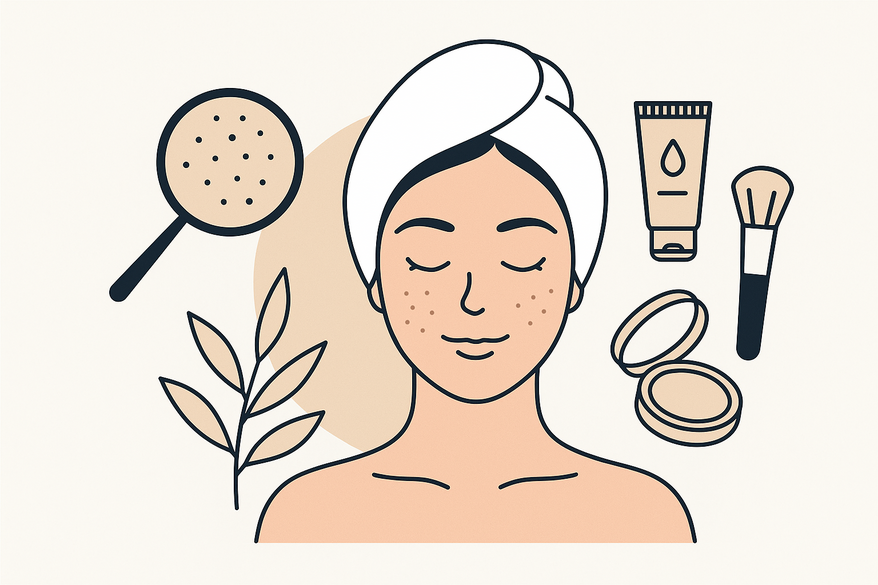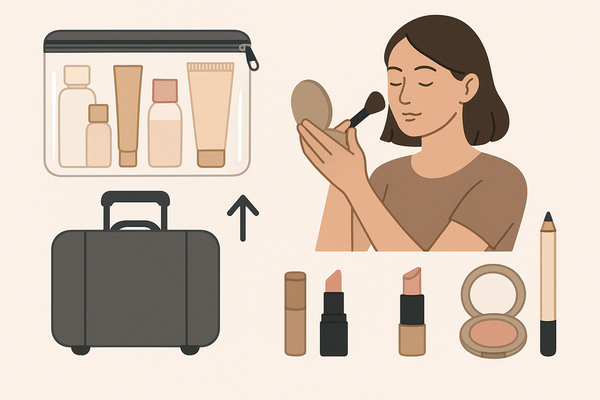The Ultimate Non-Comedogenic Makeup Guide for Sensitive Skin
Explore our non-comedogenic makeup guide to find pore-friendly products and tips for sensitive and acne-prone skin, ensuring a clear, comfortable complexion.

Estimated reading time: 8 minutes
Key Takeaways
- Non-comedogenic makeup is formulated to avoid pore blockage and reduce acne flare-ups.
- Identifying pore-friendly products requires careful label scanning and awareness of common clogging ingredients.
- Gentle application, removal, and aftercare routines further protect sensitive, acne-prone skin.
- Curated product recommendations offer breathable, mineral-based, and dermatologist-tested options.
Table of Contents
- Introduction
- What Is Non-Comedogenic Makeup?
- Benefits for Delicate Skin
- Spotting Truly Non-Comedogenic Products
- Application & Care Tips
- Top Product Picks
- Further Reading & Professional Advice
- FAQ
Introduction
Finding makeup that won’t aggravate sensitive or acne-prone skin can feel overwhelming. This guide breaks down what non-comedogenic means, why it matters, how to spot truly pore-friendly products, expert application tips, recommended items, and further resources. Let’s dive in.
1. What Is Non-Comedogenic Makeup?
Definition and Significance
A non-comedogenic label signals that a product is designed to avoid pore obstruction. Unlike heavy, occlusive cosmetics, non-comedogenic makeup uses formulations that let skin breathe and discourage breakouts.
- Helps maintain natural oil balance
- Reduces risk of comedones (blackheads and whiteheads)
- Supports clearer, calmer skin over time
Source: RMS Beauty definition
Ingredient Selection
Non-comedogenic products avoid common pore-cloggers and swap in lightweight, skin-friendly alternatives.
- Avoid: heavy oils (coconut oil, cocoa butter), lanolin, isopropyl myristate, certain waxes and dense silicones
- Prefer: lightweight emollients (caprylic/capric triglyceride), gentle minerals (zinc oxide, titanium dioxide), safe pigments (iron oxides)
Source: Medical News Today
Formulation Techniques
Cosmetic chemists perform specialized comedogenicity tests to ensure product safety for sensitive skin.
- In-house patch and pore tests
- Dermatologist-backed clinical trials
- Third-party lab analyses
2. Benefits of Non-Comedogenic Makeup for Delicate Skin
- Acne Prevention: Limits pore blockages that trigger breakouts.
- Gentle on Skin: Omits harsh chemicals and irritants, reducing redness and sensitivity.
- Lightweight Coverage: Offers a natural, breathable finish without a mask-like feel.
- Ingredient Awareness: Knowing which ingredients to skip can save you from unwanted breakouts.
Learn more from Classic Makeup USA
3. Spotting Truly Non-Comedogenic Makeup
Reading Labels & Claims
Look for “non-comedogenic,” “oil-free,” or “won’t clog pores.” Trust but verify: marketing claims aren’t regulated. Always cross-check the ingredient list.
Ingredient List Scan
1. Check packaging for explicit non-comedogenic claim.
2. Review for known pore-cloggers (see Section 2).
3. Confirm presence of lightweight ingredients like silica or rice powder.
Certifications & Seals
- Dermatologist-tested
- Allergy-tested
- Oil-free badge
Source: Healthline
4. Makeup Application & Care for Sensitive Skin
Skin Preparation- Cleanse with a gentle, non-comedogenic face wash.
- Apply a lightweight, oil-free moisturizer.
- Finish with broad-spectrum, non-comedogenic SPF.
- Use clean tools: brushes, sponges, or sanitized fingertips. See our guide on how to clean makeup brushes.
- “Less is more”: Build coverage gradually in thin layers.
- Spot-conceal rather than full-face heavy coverage.
- Thoroughly remove all makeup each night with your gentle cleanser.
- Double-cleanse if wearing long-wear or waterproof formulas.
- Tone with a soothing, alcohol-free toner.
- Apply a hydrating serum or gel-cream containing hyaluronic acid or niacinamide.
5. Top Non-Comedogenic Makeup Picks
Foundation
- bareMinerals Original Loose Foundation
Mineral-based, breathable, and non-comedogenic. Formulated for sensitive, redness-prone skin.
Source: bareMinerals blog - Neutrogena SkinClearing Liquid Makeup
Contains salicylic acid to fight existing breakouts while providing medium coverage. Dermatologist-tested and oil-free.
Source: Neutrogena product page
Powder & Blush
- Laura Mercier Translucent Loose Setting Powder
Ultra-lightweight, controls shine, and sets makeup without clogging pores.
Source: Laura Mercier - Clinique Cheek Pop
Cream-to-powder finish, dermatologist-tested, and allergy-tested.
Source: Clinique
Concealer
- IT Cosmetics Bye Bye Under Eye
Full-coverage, oil-free concealer with collagen and peptides. Won’t settle into fine lines or pores.
For personalized ingredient analysis, try Makeup Check AI:

6. Further Reading & Professional Advice
- Healthline non-comedogenic guide
- Medical News Today article
- Search PubMed for “non-comedogenic formulations acne prevention” to find peer-reviewed trials.
- Consult a licensed dermatologist or skincare specialist for personalized recommendations.
FAQ
What does non-comedogenic mean?
Non-comedogenic indicates a formula designed to avoid blocking pores, helping reduce blackheads, whiteheads, and acne.
How do I spot non-comedogenic products?
Look for explicit “non-comedogenic” or “oil-free” claims, then cross-check the ingredient list for known occlusive agents.
Are all oil-free products non-comedogenic?
Not necessarily. While oil-free formulas avoid certain ingredients, they can still contain other pore-clogging components. Always review the full list.
Can non-comedogenic makeup still cause breakouts?
Yes. Individual sensitivities vary, so patch testing and proper hygiene are essential even with pore-friendly products.




